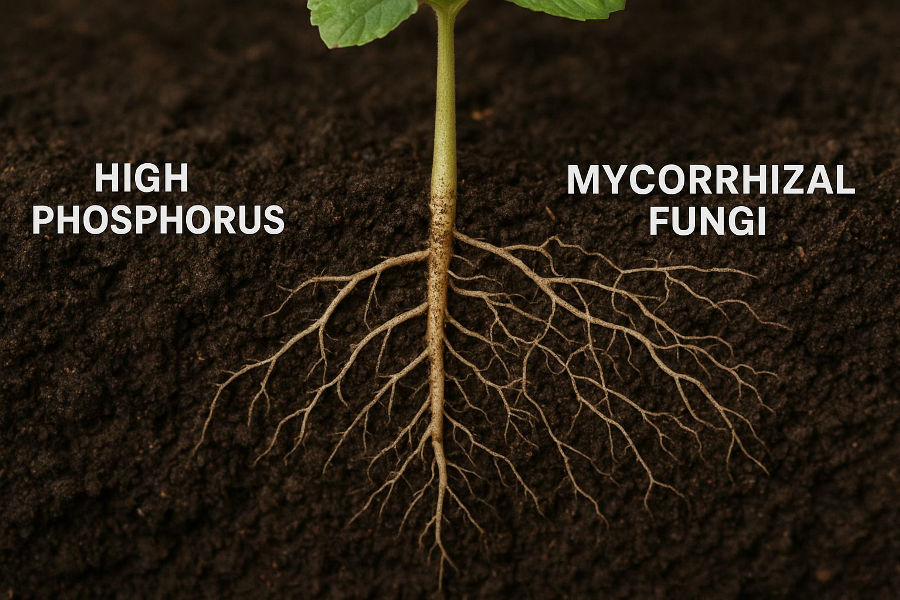Effect of High Phosphorus on Mycorrhiza in Soil
What the Research Shows
Scientific studies have shown that when soil phosphorus levels become high, the natural partnership between plant roots and mycorrhizal fungi weakens sharply. For example, plants growing under low phosphorus show strong root colonization by these fungi, but when phosphorus levels rise, colonization drops to almost zero.
How It Happens
When phosphorus in soil is abundant, plants reduce the release of certain root signals that attract mycorrhizal fungi. The plant starts relying on its own roots to take up nutrients and stops “inviting” the fungi. Even though the fungi are present in soil, they cannot properly attach or grow on the roots. This means the natural nutrient-sharing relationship is lost.
Why It Matters for Agriculture
Mycorrhizal fungi help crops absorb phosphorus, zinc, and water from deeper soil layers. When this partnership breaks, plants lose those benefits. High phosphorus also reduces microbial activity, leading to poor soil structure and less nutrient efficiency. In the long run, excessive phosphorus application can make soils hard, lifeless, and less productive.
Practical Takeaways
-
Test soil phosphorus levels before applying fertilizer.
-
Apply only the required amount of phosphorus — not more.
-
Use mycorrhizal biofertilizers or inoculants during planting.
-
Add compost, humic substances, or organic matter to keep soil biology active.
-
Avoid heavy use of phosphorus fertilizers like DAP and SSP every season.
